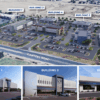Investing in value-add properties offers a level of control that other investments may not have. These assets, often underperforming or in need of improvements, offer a unique opportunity to create equity and boost returns through strategic enhancements. But why are investors doubling down on value-add in today’s market? Let’s explore the reasons behind this growing trend and how it aligns with broader commercial real estate investment goals.
What is Value-Added Properties?
Value-added properties are real estate assets that present opportunities for improvement, whether physically, operationally, or both. These are not distressed properties, but ones that require targeted investment to unlock their full potential. Improvements might include capital upgrades, lease-up of vacant space, repositioning the assets to attract better tenants, or improving operational efficiency.
Common value-add strategies include:
-
Renovating outdated common areas or unit interiors
-
Rebranding and repositioning within a submarket
-
Enhancing amenities to increase tenant retention
-
Leasing underutilized or vacant square footage
-
Adjusting below-market lease rates to reflect current rents
By executing a strategic plan, investors aim to increase rental income, stabilize occupancy, and ultimately raise the asset value, leading to a stronger return upon refinance or sale.
Why Value-Add is gaining popularity
1. Opportunity to Outperform in a Tight Market
As cap rate compression narrows returns on stabilized core assets, investors are searching for ways to outperform market averages. Value-add provides a pathway to generate alpha by creating value, rather than simply acquiring it. With many core and core-plus assets commanding premium pricing, investor’s view value-add as a more attainable entry point into desirable locations or asset classes.
2. Insulation from Market Volatility
In uncertain economic conditions, value-add projects offer a level of control that other investments may not have. Instead of relying solely on market appreciation, investors have the ability to directly influence performance through upgrades and management improvements. This active approach can help mitigate risk, especially in transitional submarkets where tenant demand is shifting.
3. Attractive Financing Structures and Equity Multiples
Although higher interest rates have cooled some lending appetites, many lenders remain open to funding well-capitalized value-add deals, especially those with a clear business plan and experienced sponsors. With the potential to increase NOI through improvements, value-added investments can offer compelling risk-adjusted returns and equity multiples over the hold period.
4. Changing Tenant Preferences
Workplace expectations, healthcare delivery models, and retail consumption have shifted. Office tenants want collaborative, wellness-focused environments. Medical users are seeking efficient outpatient facilities closer to neighborhoods. Retailers are leaning into experiential concepts. These shifts create windows for investors to acquire outdated assets and reposition them to meet modern demand, adding tangible value to the process.
5. Demand for Modernized Space in Strong Submarkets
In high-growth areas like Phoenix’s Southeast Valley or suburban markets across the Sun Belt, demand for updated space especially medical, office-flex, and small-bay industrial is outpacing supply. Investors are identifying older properties in strategic locations where modest capital investment can significantly increase lease rates and asset desirability. When done right, the result is a fully leased, income-producing asset in a market with rising fundamentals.
Case in Point: Medical and Office Properties
Medical office buildings (MOBs) are seeing increased attention from value-add investors. Aging facilities with strong locations near hospitals or residential density offer ideal repositioning potential. Enhancing accessibility, updating building systems, or adding modern exam suites can attract a new wave of healthcare tenants eager for efficient space but without the cost or timeline of ground-up development.
Similarly, older office buildings in walkable or transit-accessible districts like Midtown Phoenix or Gilbert’s Rome Towers can be transformed into vibrant, desirable workspaces with the right vision and upgrades. These improvements not only increase rental rates but also support longer-term tenant retention.
What to Look for in a Value-Add Opportunity
For investors evaluating a value-add deal, the key is to identify:
-
Solid location with long-term demand drivers
-
Clear deficiencies that can be fixed within budget
-
Undervalued rents or poor tenant mix
-
Favorable zoning or upside potential through reconfiguration
-
Reasonable acquisition basis relative to replacement cost
Due diligence is crucial. Understanding the total cost of renovations, lease-up assumptions, and market competition will determine whether the value-add strategy is feasible and profitable.
Partnering with the Right Advisory Team
At the ICRE Investment Team, we specialize in identifying and unlocking value in commercial properties. Whether you’re targeting medical office, retail, or land development plays, we bring deep market knowledge, underwriting capabilities, and a hands-on approach to each investment opportunity.
Our team has guided investors through ground-up developments, lease restructuring, and repositioning projects throughout Arizona and beyond. If you’re considering a value-add acquisition or exploring ways to enhance your current asset, we’re here to help you build a tailored strategy that aligns with your investment goals.
Let’s talk about how we can help you uncover value and create it. Reach out today or visit investingincre.com to explore active opportunities and insights.
















